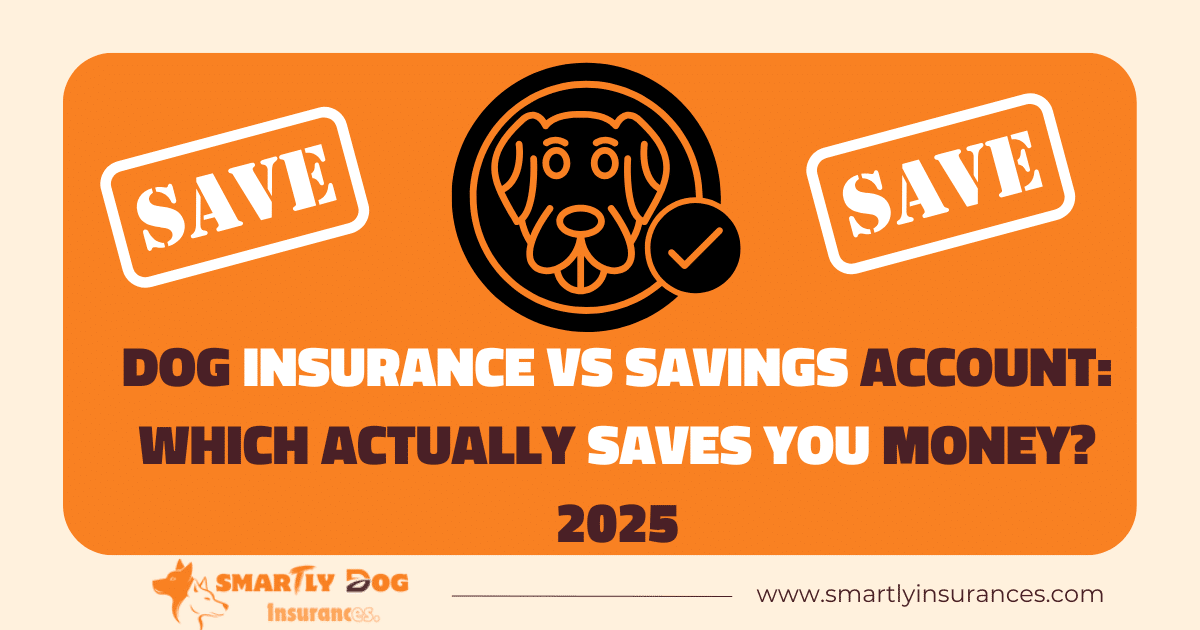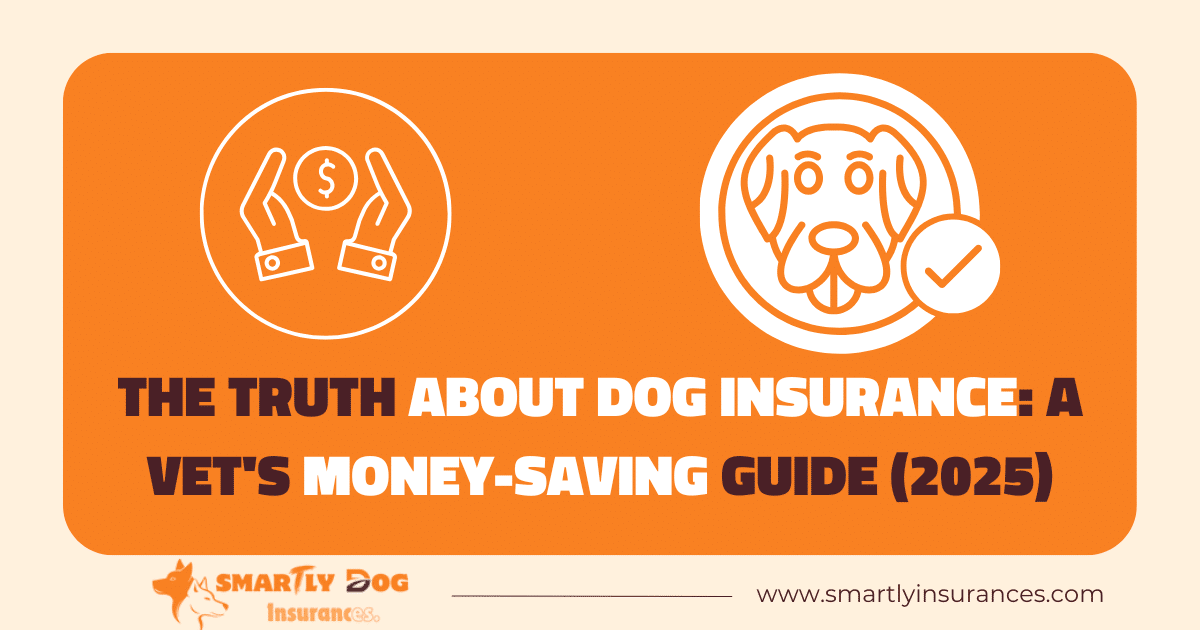Could you handle a surprise $3,151 surgery bill for your dog? Pet parents typically spend $624 each year on surgical vet visits. This makes the choice between dog insurance and a vet savings account a vital part of financial planning.
The pet insurance market keeps growing. More than 5.6 million U.S. pets had coverage in 2023, marking a 17% increase from the previous year. Dog insurance premiums cost $56.30 monthly on average, but many pet owners think saving this amount might be more affordable. A dedicated pet savings account sounds practical. Yet putting aside $30 monthly adds up to just $360 per year – not enough to cover most emergency vet bills.
Pet insurance covers 70-90% of unexpected vet costs, while a pet health savings account offers different benefits. Let’s examine both options to see which one saves you money over time.
Understanding Dog Healthcare Costs in 2025
Pet healthcare costs have risen by a lot. Veterinary services show a 7.6% increase from 2024 to 2025. This information helps you make better decisions about your pet’s financial planning.
Average Vet Bills for Common Dog Breeds
Each breed has different healthcare costs based on genetic traits and size. Greater Swiss Mountain Dogs top the list with average claims of $425. Rottweilers come next at $401, and Dogue de Bordeaux follows at $395. Mixed breeds like Australian Labradoodles have lower average claims at $226.
Emergency Treatment Costs
Emergency vet care makes up much of the unexpected expenses. Simple emergency visits start at $100-$150 for examination. X-rays can cost between $150-$600, and emergency surgeries range from $2,000-$5,000. Treatments for conditions like bloat may reach $7,500. Intestinal blockages could cost up to $10,000.
Routine Care Expenses
Regular vet care is the foundation of pet health maintenance. Annual wellness visits cost between $50-$250. These checkups include vital sign monitoring, physical examinations, and preventive care discussions. Yearly routine care typically ranges from $700-$1,500, including vaccinations and preventive medications.
Routine care has other costs too. Flea and tick prevention costs $22-$27 monthly, and heartworm prevention adds $9-$11 monthly. Dental cleanings are crucial and can cost between $200-$800 depending on the work needed.
How Dog Insurance Plans Work
Dog insurance works through a reimbursement model. Pet owners pay their vet bills first and get money back from the insurance company later.
Coverage Types and Limits
These are three different insurance plans that fit various needs:
- Complete Coverage: Covers accidents, illnesses, hereditary conditions, and behavioral issues
- Accident-Only Coverage: Focuses exclusively on injury-related treatments
- Preventive Care Coverage: Handles routine care like vaccines and dental cleanings
Most policies reimburse between 70% to 90% of covered expenses. Pet owners can pick their yearly deductible that ranges from $250 to $1,000. The insurance company processes claims online and sends reimbursements within 5-9 days after meeting the deductible.
Premium Calculation Factors
Several key elements shape your monthly premiums. Your pet’s age is a vital factor – younger pets cost less to insure. Breed-specific health risks affect the costs too, and some breeds need higher premiums because they get sick more often.
Where you live shapes your premium costs. Areas with expensive vet care lead to higher rates. The average monthly premium for dog insurance stands at $56.30. You can manage costs better by adjusting your policy’s deductible and reimbursement rates.
These policies don’t cover pre-existing conditions. Basic services like grooming, boarding, and routine waste disposal aren’t covered either. Insurance providers need waiting periods before coverage kicks in – usually a few days for accidents and up to two weeks for illnesses.
Building a Pet Health Savings Account
A pet health savings account works as a dedicated fund you can use only for your pet’s medical expenses. You can set up this account through a bank or credit union to manage vet costs better.
Monthly Saving Requirements
Your pet’s annual expenses help determine how much you need to save monthly. If your yearly vet costs reach $1,200, you should save $100 monthly. To get complete coverage, you might want to put aside $50-$100 each month. Setting up automatic transfers makes saving easier and helps you stay ready for routine and surprise expenses.
Interest Earnings Potential
Your money can grow faster in high-yield savings accounts through compound interest. A $500 balance generates about $1 in monthly interest. The interest you earn changes based on your account type and what you deposit daily. Some pet savings programs even give you perks like discounts on vet services or insurance premiums.
Emergency Fund Guidelines
Vet professionals suggest these emergency fund targets:
- Basic emergency fund: $1,000-$2,000 to start
- Single-pet household: $2,500-$5,000 without insurance
- Multi-pet household: $5,000-$8,000 recommended buffer
Your pet savings account’s success comes down to steady contributions and good saving habits. You can use these funds for any vet expense without limits. The best part? Unlike insurance premiums, the money stays yours if your pet stays healthy.
Cost Comparison: Insurance vs Savings
Pet insurance and savings costs show clear patterns when we look at specific breeds. Dog owners with small breeds deal with different money matters than those who have larger dogs.
Small Breed Scenarios
Small breed insurance starts at $35 monthly, which adds up to $420 per year. A savings account needs smaller monthly deposits since routine care costs about $360 annually. Notwithstanding that, a single major emergency could wipe out years of savings. Simple emergency surgeries can cost between $1,500-$5,000.
Large Breed Scenarios
Large breed owners pay more for vet care. Yearly preventive treatments cost $632 for large breeds – double what toy breeds pay. This cost difference comes from medication doses that depend on the dog’s weight. Insurance costs more for these breeds, but the coverage helps since large breeds face specific health risks. Problems like gastric dilatation volvulus just need quick, expensive treatment.
Senior Dog Considerations
Age changes everything about insurance and savings plans. Insurance for a 12-year-old dog can cost $149 monthly – almost $1,800 each year. Yes, it is possible that lifetime premium payments could reach $11,000. Senior pets need checkups twice a year, but many insurance companies limit coverage for dogs over 14 years. A dedicated savings account gives more options but requires significant money. Senior pets often develop several health issues that need ongoing care.
Real Cases: Money Saved and Spent
Ground examples show how insurance and savings strategies help pet owners handle unexpected vet bills. We can get into actual cases that prove these financial approaches make a difference.
Insurance Success Stories
We discovered insurance works best during emergencies. A dog named Beqa’s owner got a $6,700 reimbursement for emergency treatment. A Lab owner paid just $550 from their pocket for ACL repair surgery, and insurance covered the rest – equal to three years of premium payments.
Insurance proves its worth especially when you have senior pets. Tests worth $350 helped diagnose a treatable bacterial infection instead of a suspected spinal tumor in a 12-year-old dog. This discovery gave the pet three more years of life. Many owners might skip these tests without insurance coverage.
Savings Account Victories
Pet savings accounts work well to cover routine care costs. Many pet owners avoid financial pressure during unexpected emergencies with dedicated savings. To name just one example, a pet parent saved $1,200 each year through $100 monthly deposits. This covered preventive care and minor emergencies without touching their emergency fund.
A pet parent’s story shows how their savings account helped pay their senior dog’s monthly medication costs of $150. The owner managed to keep enough money for ongoing treatment and built a safety net for future needs through steady monthly savings.
Both approaches succeed based on timing and circumstances. One owner’s insurance covered 80% of monthly medication costs after a $200 yearly deductible. Pet parents with savings accounts enjoyed more freedom to use their funds for different pet expenses, from emergencies to routine care.
Last Words
Pet owners just need to think about several factors before choosing between pet insurance and a savings account. Small breed owners might find savings accounts good enough for routine care. Large breed owners get more value from insurance coverage because of higher medical costs.
Ground cases show both options can work well. Pet insurance becomes valuable during unexpected emergencies and can save thousands in critical situations. Pet owners who save money regularly can handle routine care costs while building their emergency funds.
Your pet’s specific needs, age, and breed-related health risks will guide your final choice. Young, healthy pets give you more options, while senior dogs or breeds with health problems might do better with insurance coverage despite higher premiums. The most important thing is to have some kind of financial plan to cover your pet’s healthcare.
Our analysis shows pet insurance protects better against major surprise expenses, especially for breeds with known health problems. Some people might prefer a savings account’s flexibility if they can stick to monthly deposits. Starting early and staying consistent with your plan helps ensure your pet gets care when they need it.



